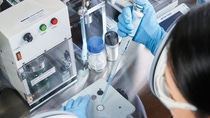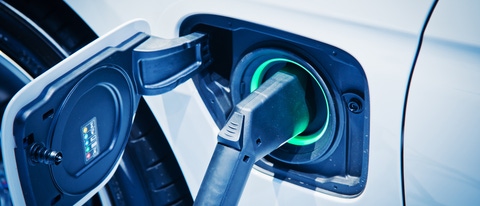Automotive & Transportation
3 eMobility market challenges impacting electric vehicle adoption
As the electric vehicle market continues to accelerate, companies and countries alike have proclaimed unwavering support of EV adoption. All new models Volvo launches will be electric or hybrid starting in 2019, Jaguar Land Rover intends to hit that goal by 2020, and almost all other automakers have outlined forward-looking plans to increase fleet electrification. Additionally, Norway wants 100 percent of new-car sales by 2025 to be all electric, and France and the United Kingdom would like to end internal combustion engine vehicle sales by 2040.
While it’s clear that the automakers are embracing electrification, it’s a rapidly evolving industry and advanced battery technology is imperative to achieve these aspirational goals. BASF, a leading electric battery material supplier, shares insight on the top three consumer concerns influencing electric vehicle adoption, and the role advanced battery technology plays in addressing those challenges.

EV range anxiety remains the biggest barrier to widespread adoption.
Consumers demand a vehicle that is fun to drive and one that offers a driving experience similar to a combustion engine, such as long range and short charging or filling times. The energy density of the battery is a crucial component that will help enable those capabilities.
Price is also a primary concern.
The cost of electric vehicle ownership is currently high relative to vehicles with traditional drivetrains, yet can be offset when government incentives are leveraged. Manufacturers are predicting cost parity by 2025 – if not before – and are working diligently with the electric vehicle battery production supply chain in an effort to reduce costs and realize overall efficiencies.
E-mobility infrastructure is still needed.
Consumers rank not having access to efficient EV charging stations as the third most serious barrier behind price and driving range. OEMs continue to champion increased infrastructure and charging stations in major cities and along major highways. This challenge demonstrates why quick charge capabilities are an important development.
Innovations will help to make electric vehicles a practical reality for everyone.
In order to achieve longer range, shorter charging time and lower costs, the full supply chain needs to work together to build better batteries. BASF, for example, has teamed with other companies to ensure it has access to the best technology, talent and expertise while increasing production capabilities. Specifically, BASF and TODA expanded their collaboration to create BASF Toda America LLC (BTA) to support the growing customer demands in North America.
“BASF is focused on perfecting the battery materials powering today’s electric and hybrid vehicles and developing next-gen technology to meet the anticipated needs of the battery market,” said Heiko Urtel, business director for BASF battery materials in North America and CEO of BTA. “The chemistry we’re developing is an enabling factor for range, charging time, and of course, price – key aspects that will help make electric vehicles even more attractive to consumers than they are today.”
To hear more from Heiko on trends in the e-mobility industry and how BASF will continue to be a global leader in battery material development, check out this video.
As consumer adoption of pure EVs continues to ramp up, keep in mind:
Hybrid powertrains helped pave the way for pure EV adoption.
In 2017, electric vehicle sales surpassed a million units for the first time, and the current growth trajectory indicates that number will likely quadruple by 2020. In addition, pure electric vehicles currently make up 66 percent of the global EV market, according to McKinsey’s Electric Vehicle Index (EVI).
China is leading the charge.
Its EV market grew by 72 percent in 2017, growing by more than the North America and Europe markets combined. Approximately 94 percent of sales were made by domestic OEMs. This market represents a huge opportunity for global automakers and tier suppliers.
Regulations are still a driving force.
The European Union and the US Environmental Protection Agency have regulations that encourage automakers to sell electric vehicles within their fleets. Specifically, in North America, the sale of electric vehicles helps off-set emission averages associated with consumer-preferred SUVs and light-duty trucks.
For more information about BASF’s battery materials, click here.
